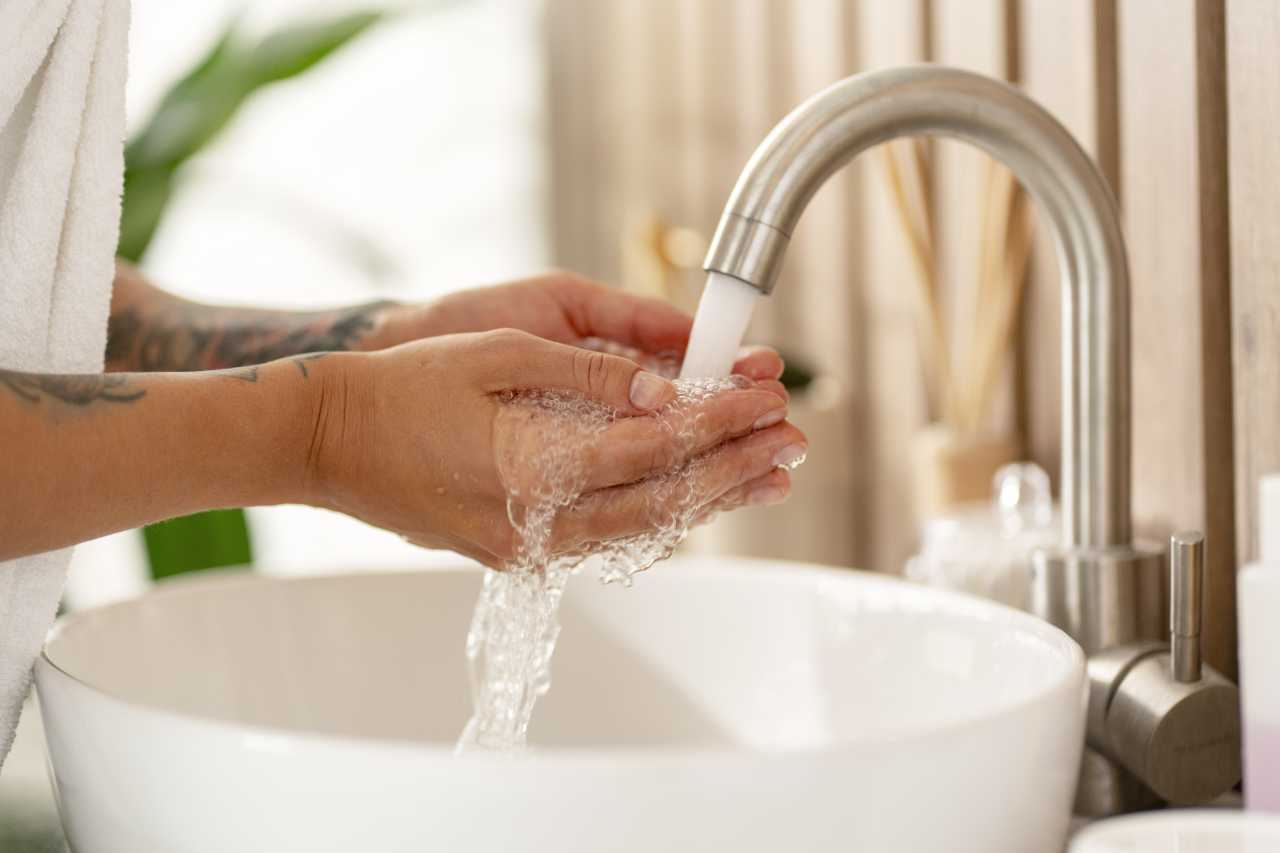Winter Home Maintenance: Protecting Your Water Lines in Chicago
The Windy City is known for its beautiful architecture, vibrant cultural scene, and, unfortunately, its harsh winters. One of the most significant challenges homeowners face in Chicago is maintaining their water lines during the freezing months. Without proper care, you could look at costly repairs or replacements. This blog post will guide you through preventative […]

woman washing her hands in bathroom sink, closeup. cleaning concept, healthy lifestyle
The Windy City is known for its beautiful architecture, vibrant cultural scene, and, unfortunately, its harsh winters. One of the most significant challenges homeowners face in Chicago is maintaining their water lines during the freezing months. Without proper care, you could look at costly repairs or replacements. This blog post will guide you through preventative measures to avoid those expensive Chicago water line repairs. Read on to discover practical tips and strategies to keep your water lines in top-notch condition year-round.
Understanding Your Water Line System
Before discussing preventative measures, it is essential to understand your water line system. Your main water line typically connects your home to the city’s water supply. This crucial pipeline ensures fresh, clean water flows into your house. If it is compromised, the fallout can be both inconvenient and costly. A damaged water line disrupts daily activities, leading to water wastage and increased utility bills. Additionally, untreated leaks and bursts can cause significant structural damage to your property, making timely Chicago water line repair a critical concern for homeowners.
Insulating Your Pipes
Insulating your pipes is one of the most straightforward ways to prevent freezing. Pipe insulation materials like foam sleeves or heat tape are readily available and easy to install. They act as a barrier, keeping the cold out and the warmth in.
Focus on insulating pipes in unheated areas of your home, such as basements, crawl spaces, and garages. These sections are more exposed to freezing temperatures. Consider letting a trickle of water run through the taps during particularly cold spells. Moving water is less likely to freeze, reducing the risk of pipe bursts.
Maintaining a Steady Temperature
Keeping your home at a consistent temperature can significantly reduce the risk of frozen pipes. Set your thermostat to a minimum of 55°F (13°C) even when you are away. This ensures that the internal temperature around your pipes remains stable. Seal any gaps or cracks in your home’s exterior walls, especially around pipe entry points. This prevents cold air from seeping in and causing localized freezing.
If you plan to be away for an extended period, winterize your home by shutting off and draining the water system. This precautionary step can prevent potential disasters while you are away.
Regular Inspections
Routine inspections can catch minor issues before they escalate into major problems. Schedule an annual inspection with a licensed plumber who is familiar with Chicago’s climate and infrastructure. They can identify potential weak spots and recommend necessary repairs or upgrades.
Check for signs of leakage, such as damp spots, mold growth, or unexplained increases in your water bill. Additionally, consider investing in a smart water leak detector. These devices alert you to leaks in real time, allowing for prompt action and minimal damage.
Installing a Pressure-reducing Valve
High water pressure can strain pipes, leading to leaks and bursts. A pressure-reducing valve (PRV) can regulate the pressure entering your home, ensuring it stays within a safe range. Consult with a professional to determine the optimal pressure settings for your home. Regularly check the PRV to ensure it is functioning correctly. If you notice any fluctuations in water pressure, it may be time for a replacement.
Upgrading to Frost-Proof Faucets
Outdoor faucets are particularly vulnerable to freezing temperatures. Upgrading to frost-proof faucets can prevent water from sitting in the line and freezing. These faucets have a longer stem, ensuring the shut-off valve is located inside the house where it is warmer.
During winter, disconnect and store garden hoses. Leaving them attached can trap water in the faucet and pipes, leading to freezing and potential bursts. Check outdoor faucets regularly for leaks and drips. Even minor issues can escalate during freezing conditions, resulting in significant damage.
Being Prepared for Emergencies
Even with all preventative measures in place, emergencies can still happen. Keep the contact information of a reliable plumber handy. A quick response can minimize damage and repair costs.
Moreover, familiarize yourself with the location of your main water shut-off valve. Shutting off the water supply can prevent further damage in the event of a burst pipe. Consider keeping emergency repair supplies, such as pipe repair clamps and epoxy putty. These can provide temporary fixes until a professional arrives.
Community and Professional Resources
Chicago has numerous resources to help homeowners maintain their water lines. Local government websites often provide guidelines and tips for winterizing your home. Join local community groups or forums to share and learn from others’ experiences. Networking can provide valuable insights and recommendations for reliable service providers.
Conclusion
By taking preventative measures, you can avoid the hassle and expense of unexpected Chicago water line repairs. Remember, proactive maintenance is key. By staying vigilant and prepared, you can enjoy a worry-free winter and ensure your water lines remain in optimal condition. Consider signing up for a consultation with an expert plumber today for more tips and personalized advice.
